Continuous.Discrete.Infantesimal.
2021—current
Continuous. Discrete. Infantesimal. is a series in which I explore details of family photograph archives, coupled with memory, imagination and abstraction. My intention in painting these subjects is to examine the thread that ties us together in our complex family systems, and how that informs our identity and how we perceive the world. I am as interested in those connections as the time and space between us that can’t be bridged.
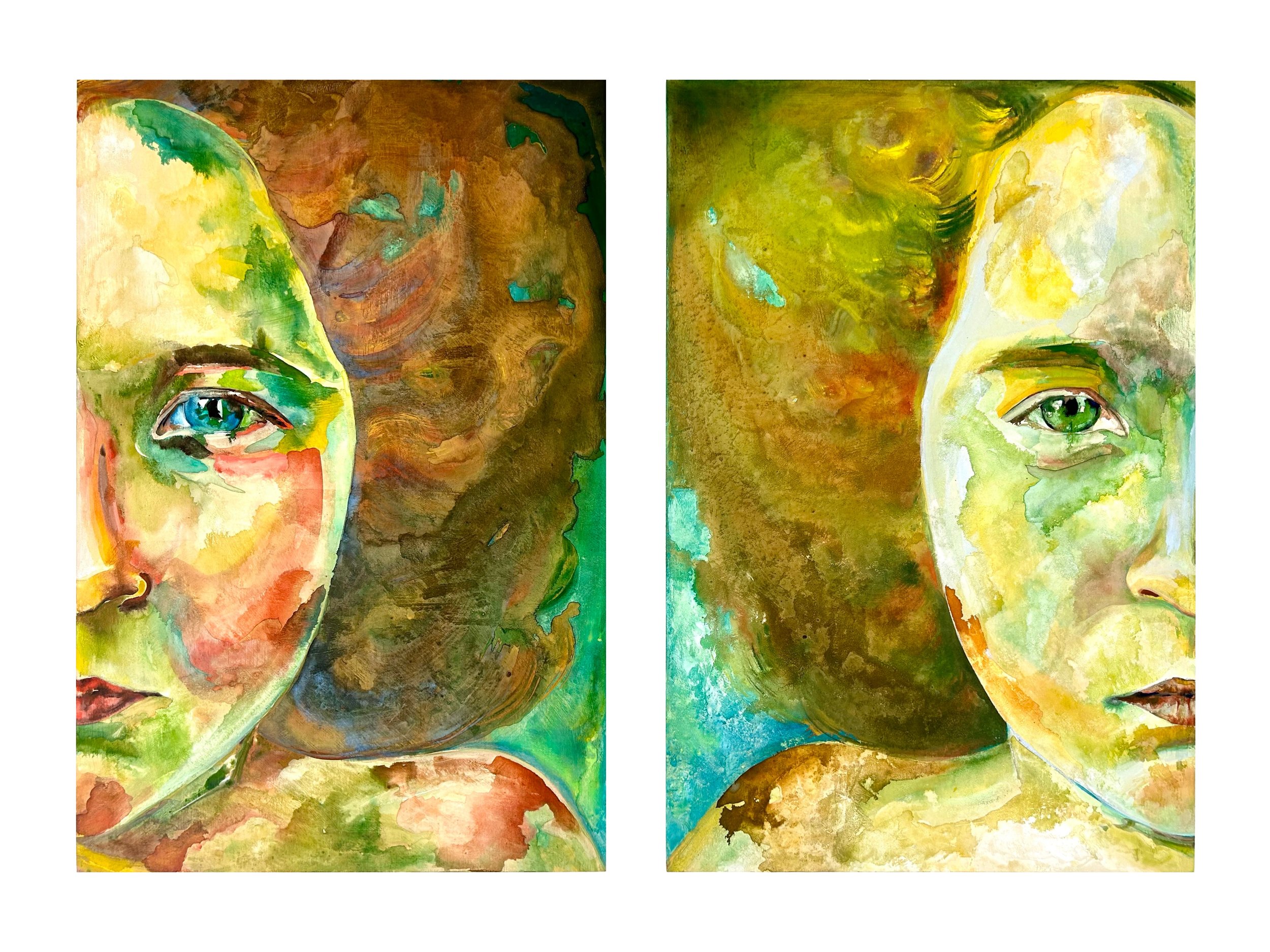
Phases of the Moon|Acrylic-Gouache on Wood Panel|36x48 Inches (Diptych)|2023

LEFT PANEL Phases of the Moon|Acrylic-Gouache on Wood Panel|36x48 Inches (Diptych)|2023

RIGHT PANEL Phases of the Moon|Acrylic-Gouache on Wood Panel|36x48 Inches (Diptych)|2023
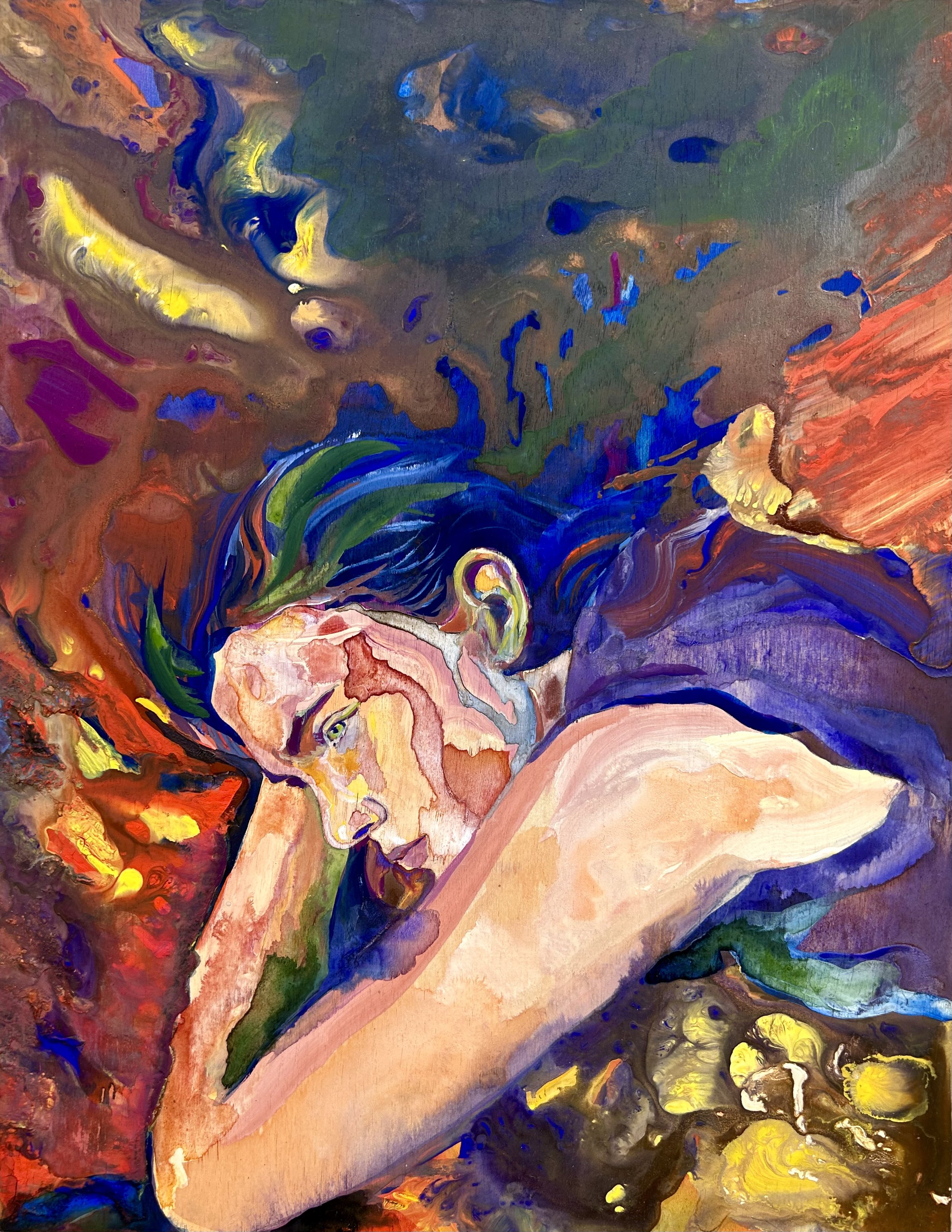
The Intelligence of Light|Acrylic-Gouache on Wood Panel|14x11 Inches|2023

Giant|Watercolor, Acrylic, Acrylic-Gouache on Yupo Mounted on Wood Panel|26x20 Inches|2022

The Wise River|Watercolor, Acrylic, Acrylic-Gouache on Gessobord|30x40 Inches|2022

The Earth Is Humming|Watercolor, Acrylic, Acrylic-Gouache on Yupo Mounted on Wood Panel|24x20 Inches|2022

Fourth of July (No.1)|Watercolor and Gouache on Yupo Mounted on Wood Panel|6x9 Inches|2021
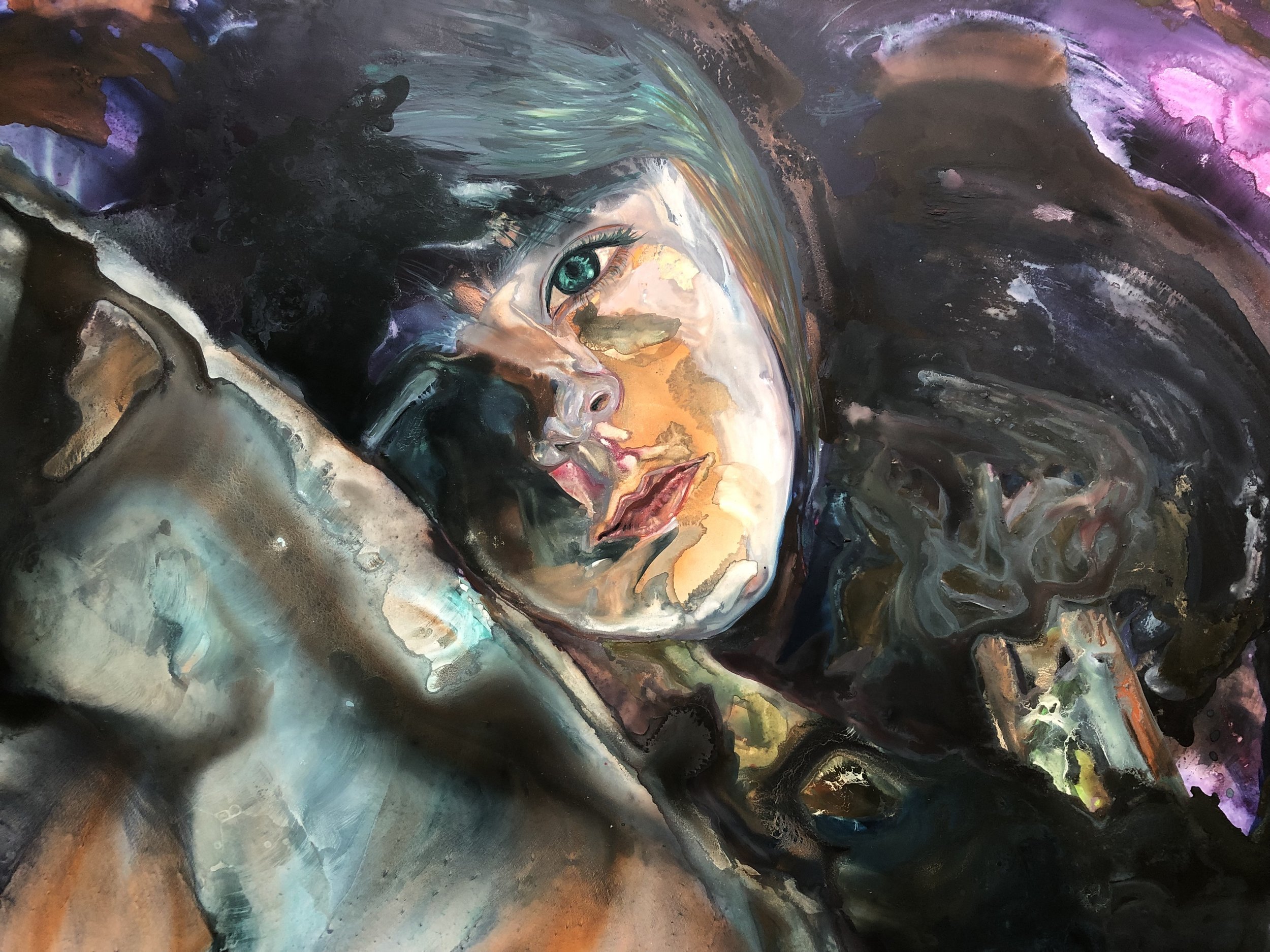
The Understanding|Watercolor on Yupo Mounted on Wood Panel|20x26 Inches|2021

The Small Sword|Watercolor, Acrylic, Acrylic-Gouache on Gessobord|40x30 Inches|2022

The Advised Protector|Watercolor, Acrylic, Acrylic-Gouache on Gessobord|40x30 Inches|2022

The Unconquerable|Watercolor on Yupo Mounted on Wood Panel|24x20 Inches|2021
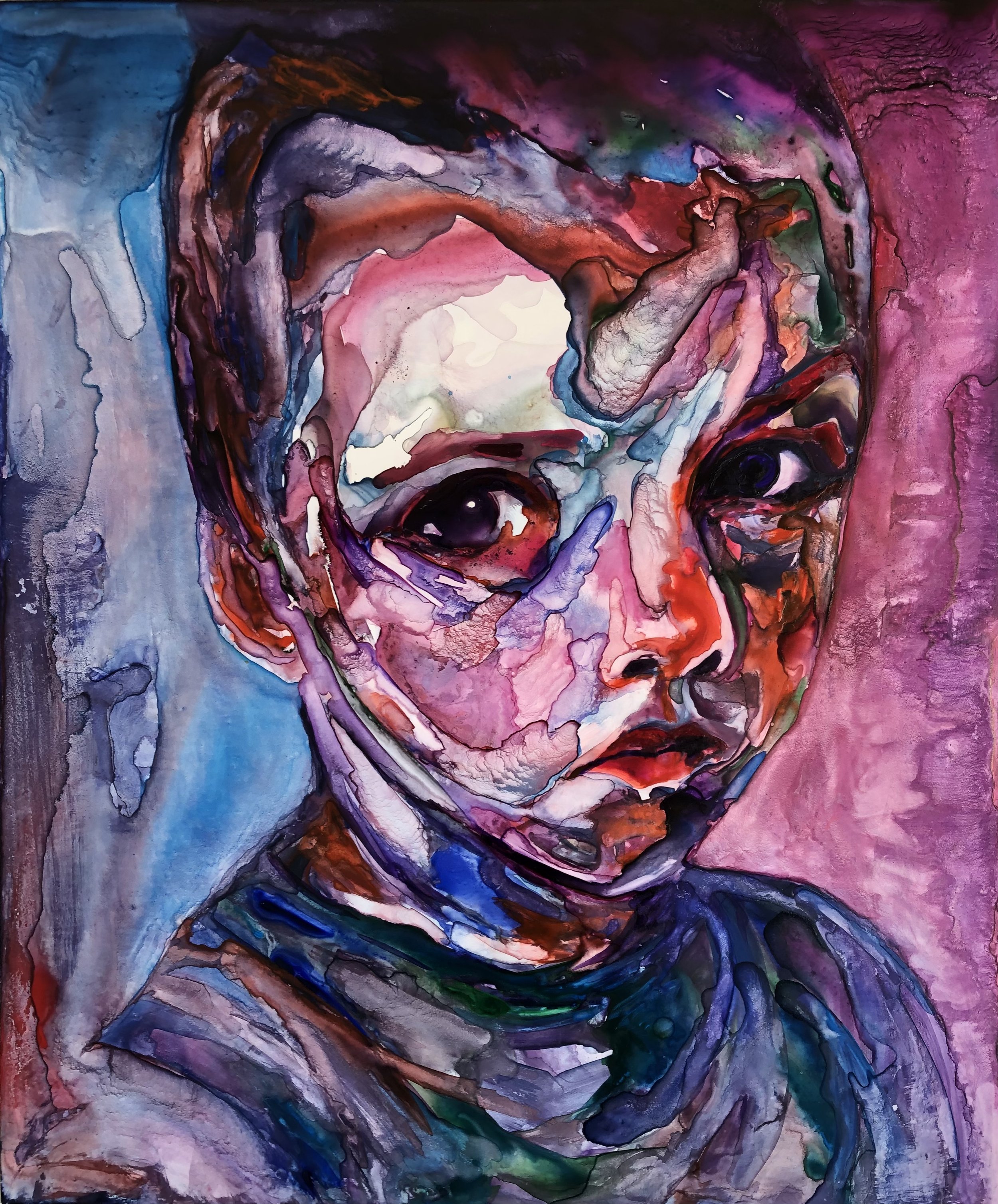
The Defender|Watercolor on Yupo Mounted on Wood Panel|24x20 Inches|2021

Winter|Watercolor on Film Mounted on Wood Panel|12x18 Inches|2021

The Prince’s Wife|Watercolor and Gouache on Film Mounted on Wood Panel|12x9 Inches|2021

The Wedding|Watercolor and Gouache on Film Mounted on Wood Panel|12x18 Inches|2021
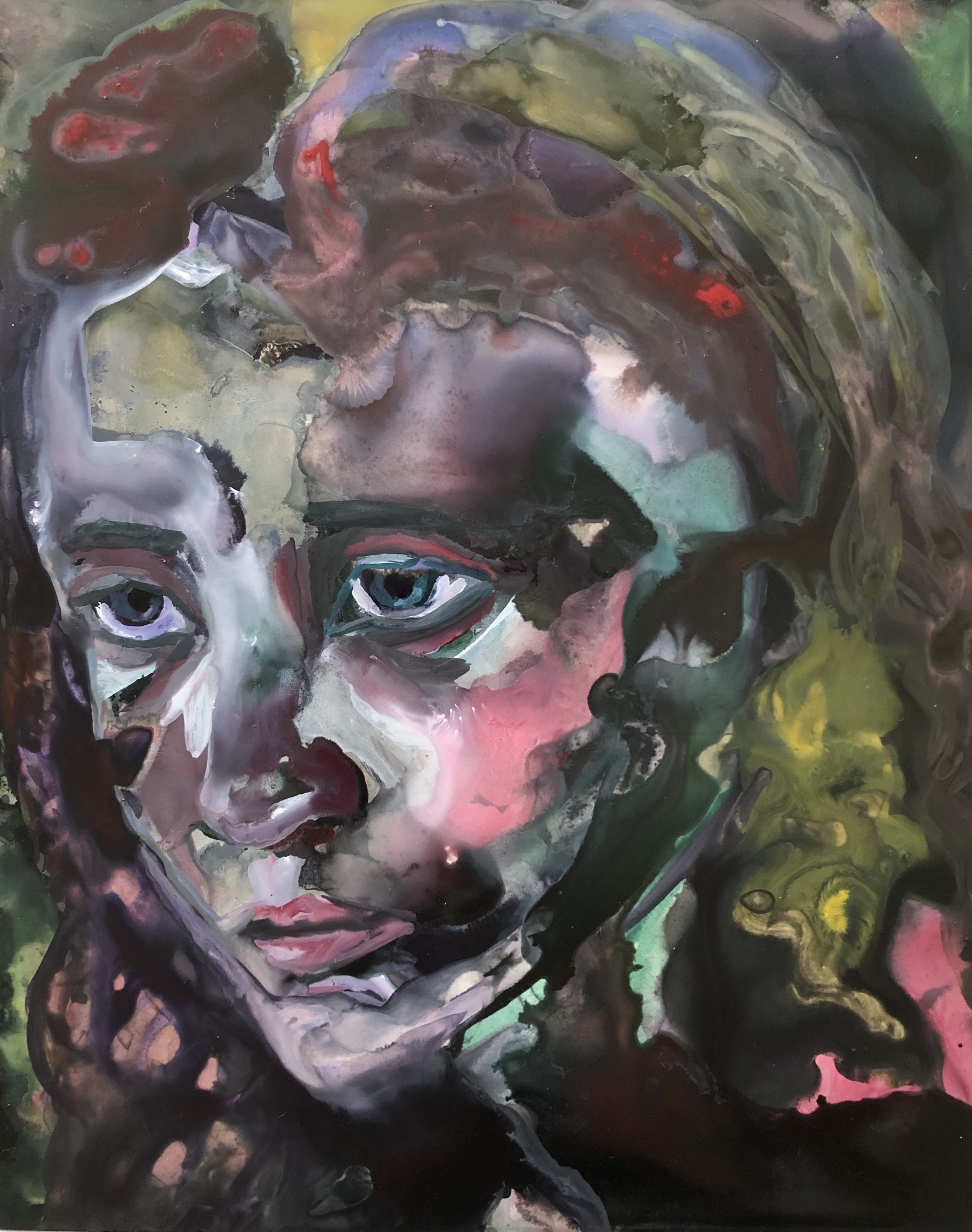
Heart of the Back Mountain (No.1)|Ink and Watercolor on Yupo Mounted on Wood Panel|10x8 Inches|2021

Heart of the Back Mountain (No.2)|Ink and Watercolor on Yupo Mounted on Wood Panel|10x8 Inches|2021

New York|Watercolor on Film Mounted on Wood Panel|8x8 Inches|2021

December|Watercolor on Film Mounted on Wood|8x8 Inches|2022

Spring|Watercolor on Film Mounted on Wood Panel|8x8 Inches|2021

July|Watercolor on Film Mounted on Wood Panel|8x8 Inches|2021

Pennsylvania|Watercolor on Film Mounted on Wood Panel|8x8 Inches|2021

October|Watercolor on Film Mounted on Wood Panel|8x8 Inches|2021
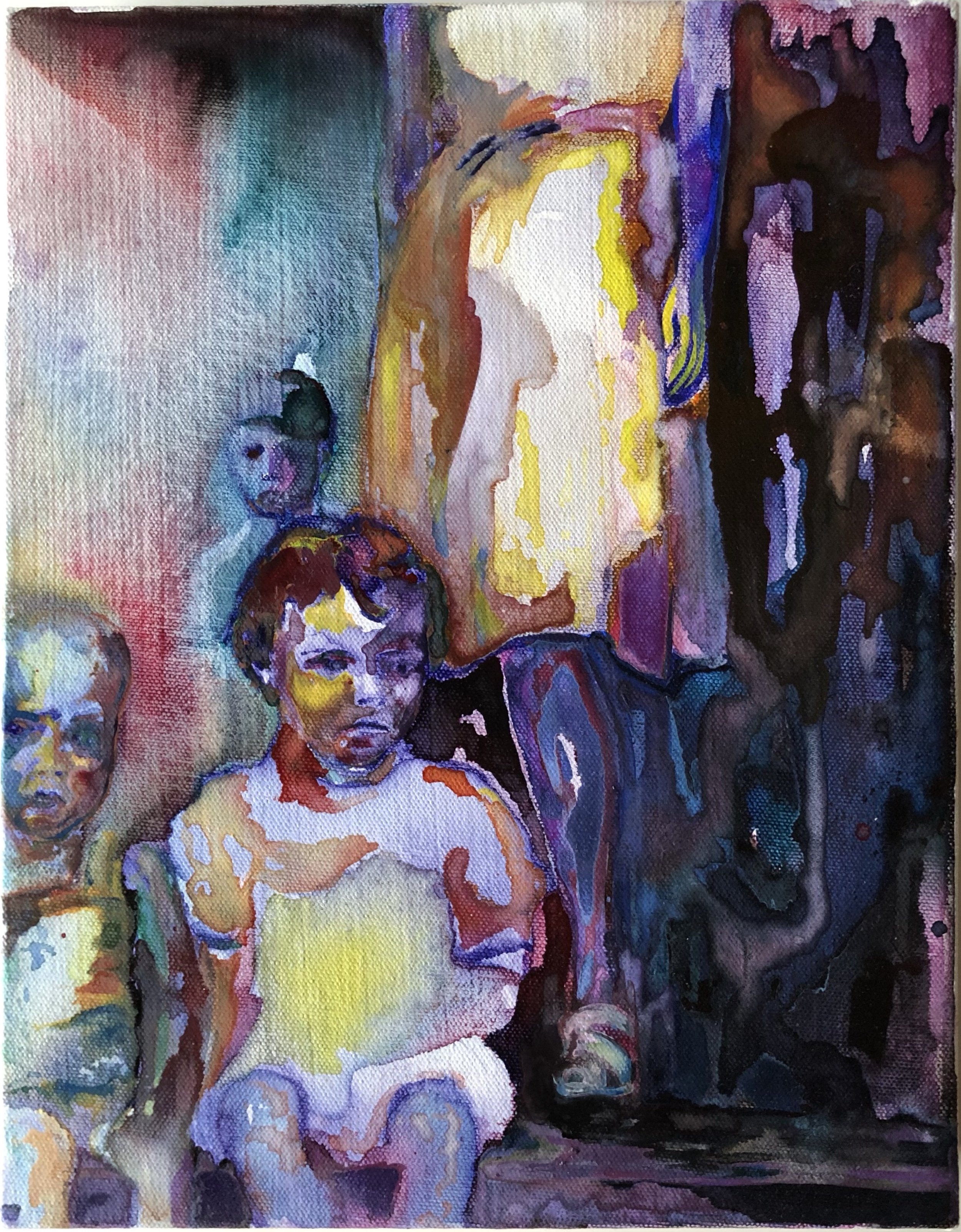
So We Could See the Future Without Paradise|Watercolor and Gouache on Canvas|14x11 Inches|2022

From Which the Future is Most Clearly Understood|Watercolor on Yupo Mounted on Wood Panel|9x12 Inches|2021

Orchard Park|Watercolor on Film Mounted on Wood Panel12x9 Inches|2021

The Canals of Mars|Watercolor and Ink on Paper|11x8.5|2021

Just Before Memory Goes Dark, It Stays Another Moment, Convincingly Bright|Watercolor and Ink on Paper|11x8.5 Inches|2021

Etna|Watercolor and Gouache on Film Mounted on Wood|12x9 Inches|2021

The Birthday|Watercolor on Film Mounted on Wood Panel|12x9 Inches|2021

2009|Watercolor on Film Mounted on Wood Panel|12x9 Inches|2021
The 1918 House
My father, whose limp is a stutter,
Says he was born in the epidemic,
The early days, when people survived
Like expected because it was just flu.
In May, he tells me, the cases were
Three day fevers. By June, he says, the flu
Had moved to where it always summers,
Far from the warm weather of families.
My father, who shuffles like those who
Are stared at by children, accepts my hand
For surfaces other than sidewalks
To examine every place where he’s lived.
In September, he tells me, symptoms
Meant death—the coughing of blood, the blue face,
The darkening of feet that said “soon”
In the common language for conclusion.
The lungs, he says, went soggy with blood,
The people drowned for days. The newly born,
He murmurs, were passed over like sons
Of Jews, God’s mercy on our infant breath.
My father, who refuses a cane,
Touches a wall he built in a yard owned
By strangers, pausing on his way to
The beginning, the house where, in the year
Of the Spanish flu, he was first-born
And no one died, where his parents survived
To see themselves chosen, praising God
And good fortune and their lifetimes of work.
On both sides, he says, are the houses
Of victims, sons who enlisted for war,
And he pauses, the porch so different
I have to read the number to prove it.
How winter blessed us, he says, ending
That horror, driving us inside to love.
He asks me to knock on the white door;
He says these people will invite us in.
— Gary Fincke
